Environmental Engineering Reference
In-Depth Information
Freewheeling diode
Shaded module
Solar module
Blocking diode
Fuse
Load
Fig. 6.16
Connection of solar modules inside a photovoltaic generator /6-10/
However, experiences have shown that neither bypass diodes within the indi-
vidual cell strings of a module, nor blocking diodes at the end of a module are
required. These kinds of safety measures create increased energy losses and thus
increased costs. Furthermore, diodes show a shorter technical lifetime than cells
and modules. However, the case is different if several modules are connected to
larger units (arrays, array fields, generators) since partial shading is much more
likely under these circumstances (e.g. by clouds floating across the sky, shading
caused by building, trees etc. within the course of a day or components of the
photovoltaic generator). In this case, the effects discussed above need to be con-
sidered for modules instead of individual cells. Each module is therefore bridged
by a freewheeling diode, occasionally provided and incorporated into the module
by the manufacturer. Nowadays, blocking diodes are mostly omitted, since equal-
ising currents do not impair safety. Additionally, fuses are attached to the termi-
nals of the module strings to prevent overload of modules and cables in case of
short-circuit within a module string.
The losses due to the serial connection of individual cells to photovoltaic mod-
ules amount to approximately 2 to 3 % of the electrical energy available at termi-
nal clamps or connecting cables of the individual cells. If several modules com-
pose larger generator units, further losses of this magnitude, depending on the
generator field size, must be considered. However, pre-selecting each cell for a
certain module type by their electrical performance parameters by the manufac-
turer could reduce these losses.
6.2.2
Further system components
Inverters.
Solar generators as well as battery storage systems principally deliver
direct voltage or direct current (DC). Many small appliances (such as watches and
calculators) are designed for DC supply. However, most appliances require alter-



Search WWH ::

Custom Search